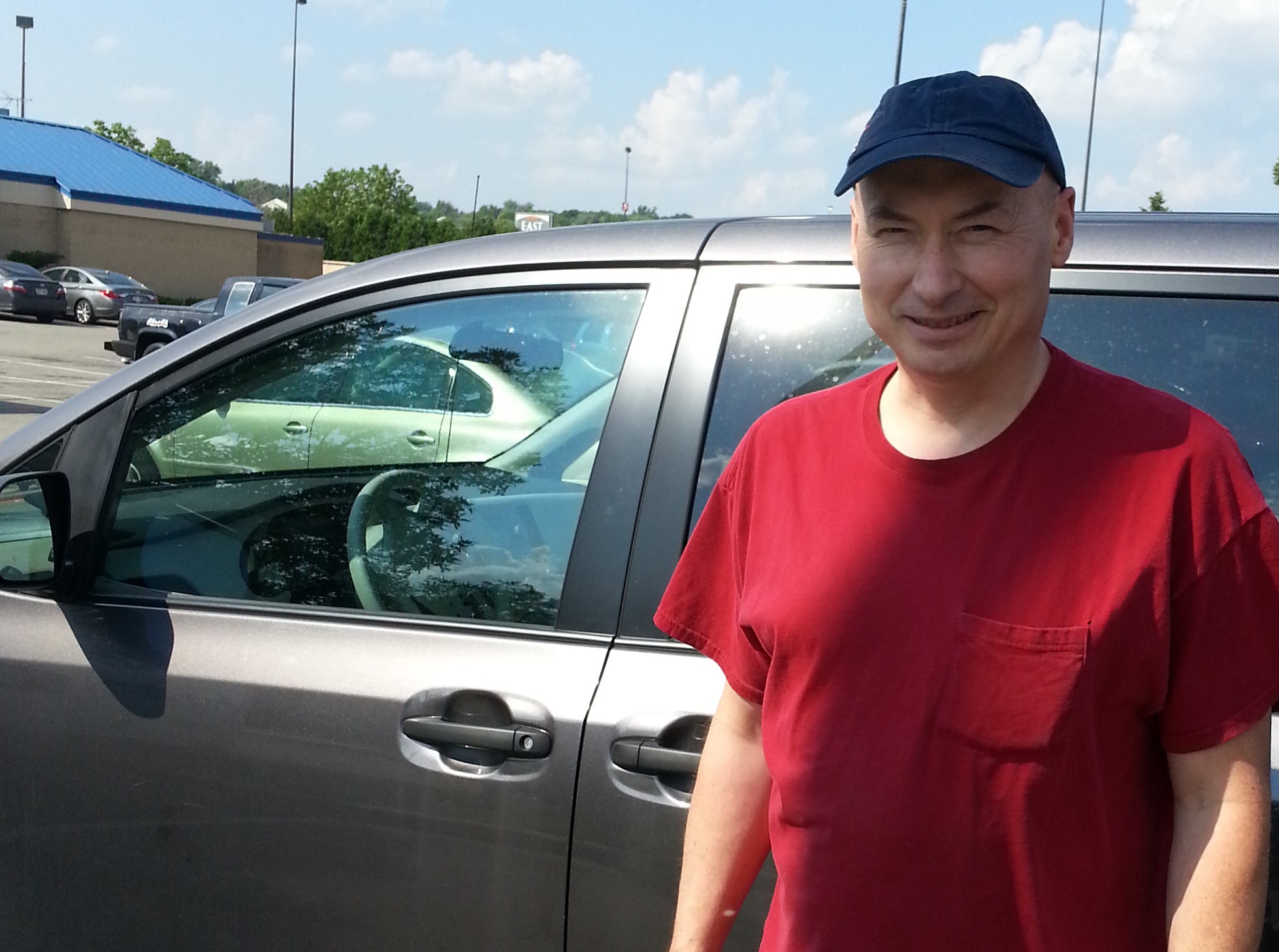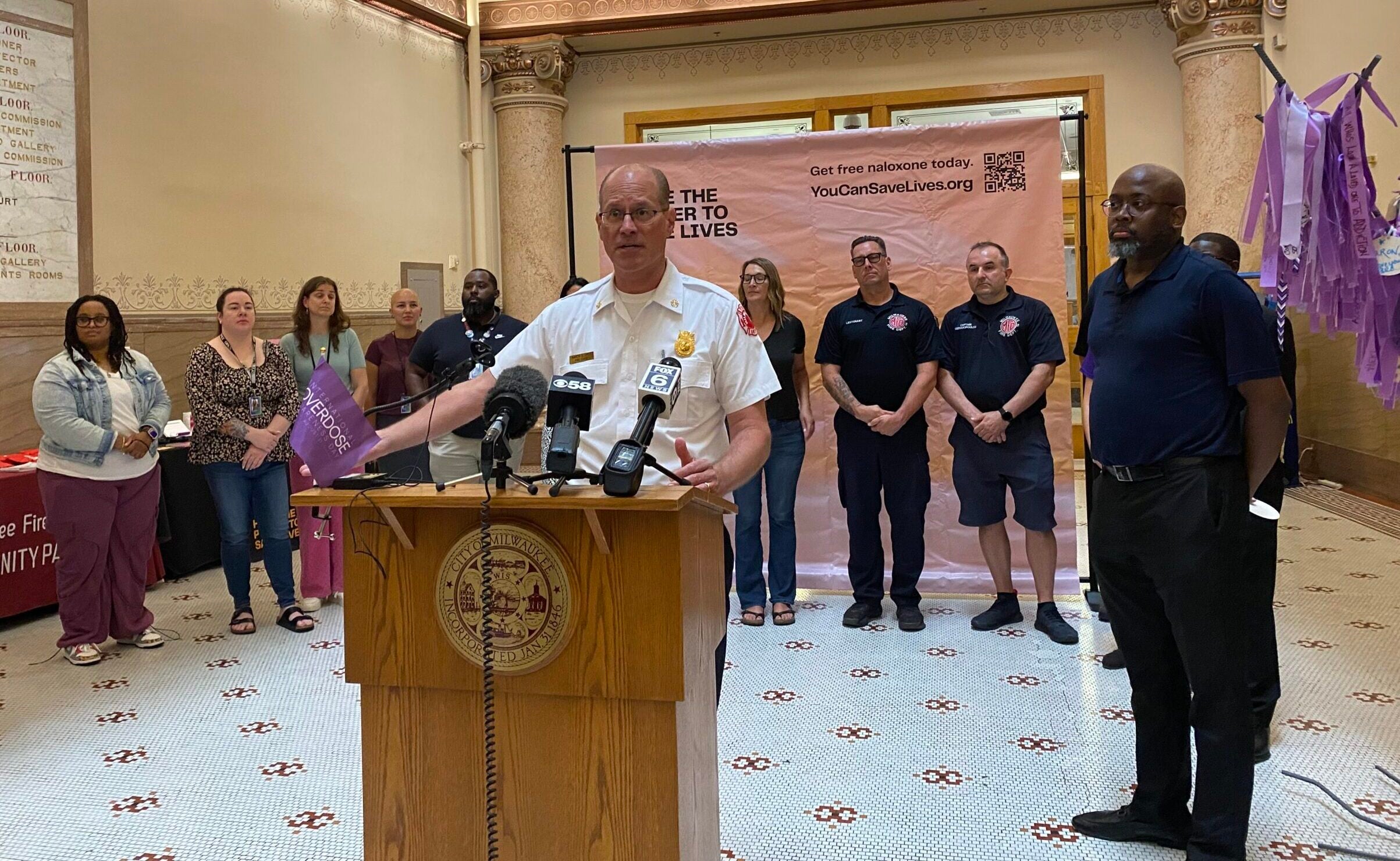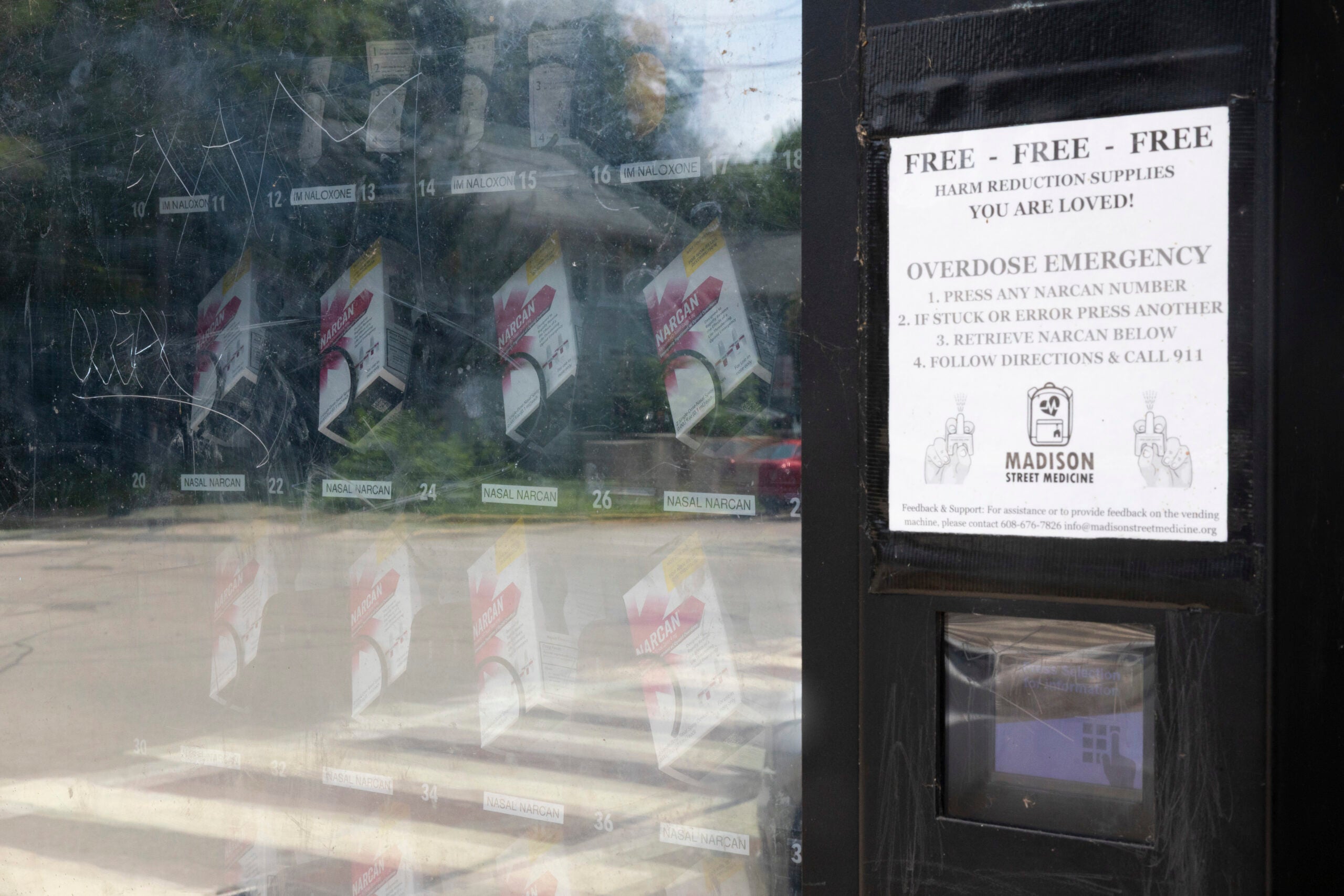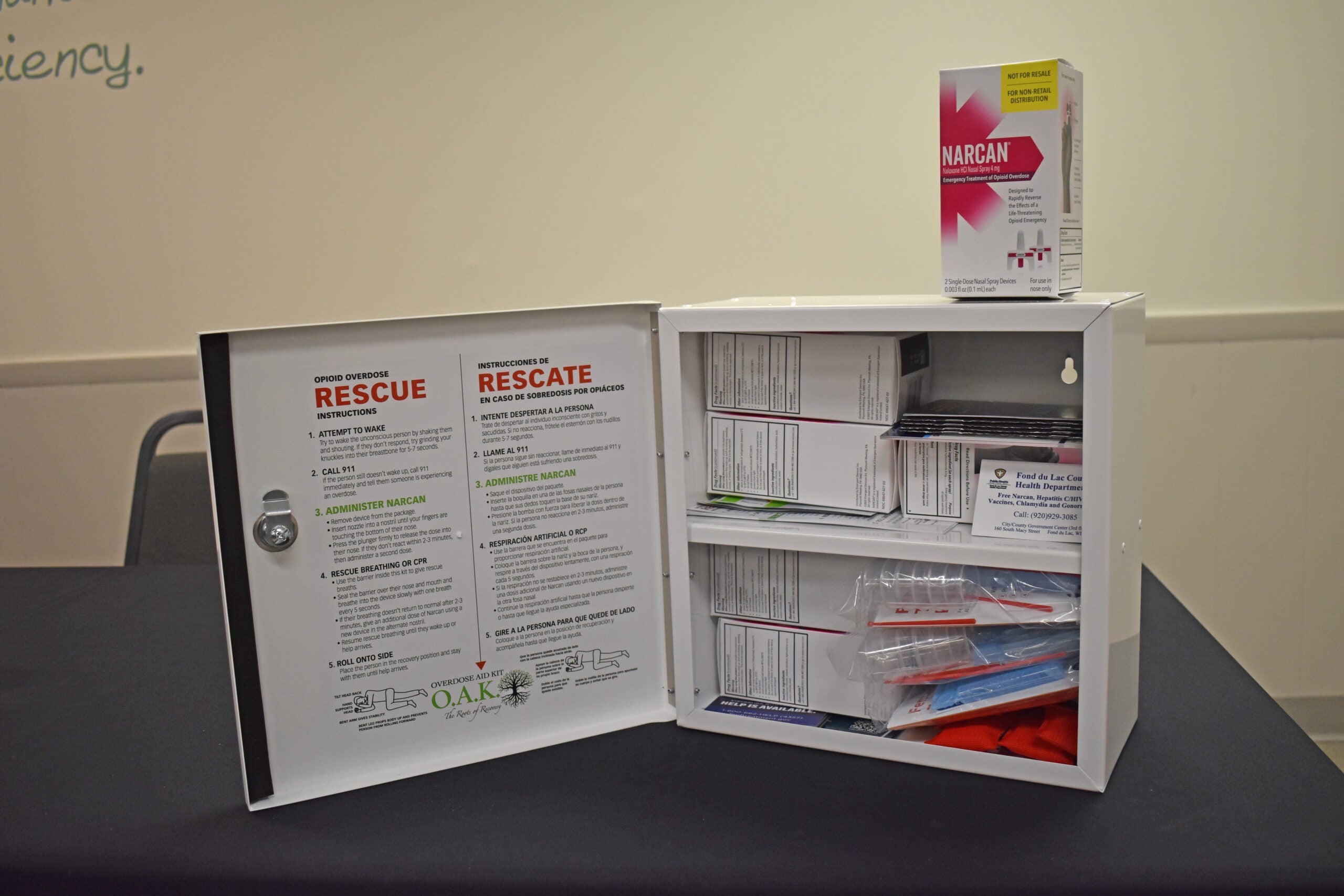A drug called naloxone can bring heroin users who overdose back from the brink of death.
But naloxone is not always available, especially in rural areas. One nonprofit – the AIDS Resource Center of Wisconsin (ARCW) – is working to change that.
If you’re an injection drug user in south-central Wisconsin, you may know or have heard of a guy named Jimi, also known as James Reinke. Reinke works for ARCW’s Lifepoint Needle Exchange program, which tries to prevent the spread of AIDS and hepatitis C through shared needles.
News with a little more humanity
WPR’s “Wisconsin Today” newsletter keeps you connected to the state you love without feeling overwhelmed. No paywall. No agenda. No corporate filter.
Reinke drives a van around all day, meeting users at their preferred location where they swap out their dirty needles for free clean needles and other supplies.
He stays busy: “Last year we did 300,000 syringes,” he says. “It was over 2,500 stops.”
Reinke also carries Narcan, a form of naloxone. He hands it out, along with a prescription, and provides training.
“Really, the naloxone is just a muscle shot,” says Reinke. “You hit ’em in the shoulder, you hit ’em in the thigh, in the top of the butt. So you can’t miss.”
In the event of an overdose naloxone reverses the effects of opiates, like heroin and OxyCodone. At one of Reinke’s regular stops, he provides a refill to a woman in her 40s who doesn’t want to share her name. But says she’s used the drug many times on others – and recently it was used on her.
“I said to my friend ‘Whoa, whoa, whoa,’ and that’s all I remember,” she says. “And I guess I turned purple. Narcan saved my life this last week, and I’ve had five saves in the last year-and-a-half myself.”
ARCW started providing naloxone to users in 2005 at its nine locations across the state after a rise in overdoses. Scott Stokes, the group’s prevention services director, says since then thousands of lives have been saved. But the program has its critics.
“A lot of people feel that if [others] are going to use drugs, then they need to suffer the consequences that go along with it,” says Stokes. His response to the critics: “This isn’t alcohol, where if you’re drinking and driving you lose your license. If you overdose, you die.”
He says they are currently the only source in the state where users can get naloxone – physicians could prescribe it, but they don’t. He says without a Good Samaritan Law which would provide immunity to users, many won’t call 911 because they’re afraid they could face criminal charges.
Stokes also says there’s another reason for the need for wider distribution: Many ambulances don’t carry naloxone. In Wisconsin, only Advanced Life Support level services – those that can start IVs – can legally carry the drug. Madison Fire Department Paramedic Paul Poker says that’s a real issue in the suburbs and rural communities with basic level EMTs.
“If you have to wait 15, 20, 25 minutes to get that drug, or wait for them to transport you to the hospital, the chances of long-term affects, whether it’s brain damage or something like that, can go up significantly,” says Poker.
There is an inhaled version of Narcan that many basic level providers across the country are carrying. The state Department of Health Services – which licenses EMS providers – says that would require additional training and a change in law but that it is under consideration.
In last five years in Wisconsin, EMS services who have reported naloxone use to the state have used it over 15,000 times.
This is part four of a six-part series on heroin use in Wisconsin from WPR News. Be sure to check out part one, part two, and part three.
Wisconsin Public Radio, © Copyright 2025, Board of Regents of the University of Wisconsin System and Wisconsin Educational Communications Board.






